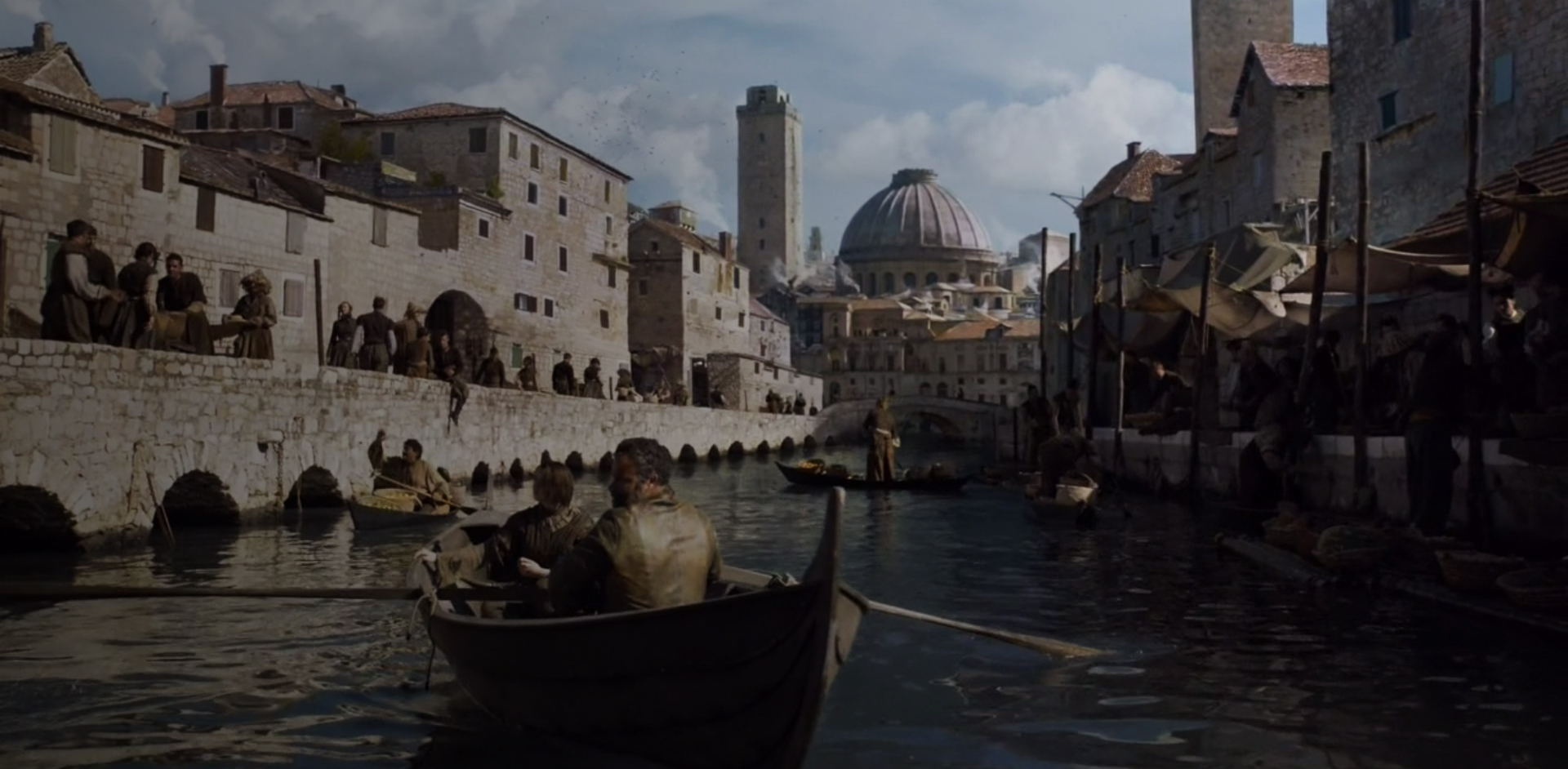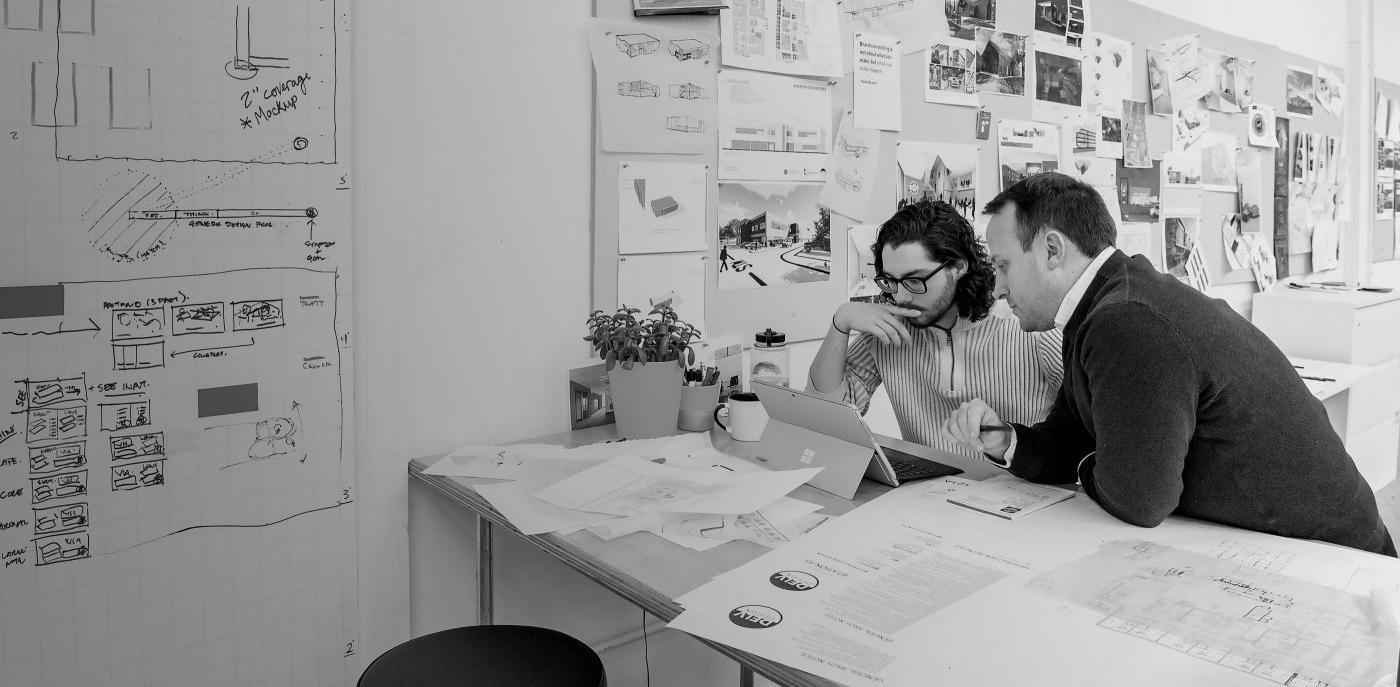This year’s big ArchViz competition, the One Rendering Challenge, tasks entrants with telling a story about not only architecture, but also the experience of the people that inhabit it. Register now for a chance to have your work reviewed by a host of renowned names from the world of architectural visualization:
Register for the One Rendering Challenge
For British award-winning art director Christina Moore, spatial storytelling is a core part of creating the fantastical worlds she designs for a living. We sat down with Moore to discuss the art of visualization, particularly as it relates to one of her biggest commissions to date: Multiple seasons of Game of Thrones. As you prepare your entry for the One Rendering Challenge, take inspiration from one of the best visualizers in the business:
Paul Keskeys: A lot of your work involves combining physical sets with computer generated models, characters and effects. What are the main challenges in blending real and virtual worlds together?
Christina Moore: Often this is a question of understanding architecture rather than the limitations of technology. Just because it is possible to make things of magnificent scale and impressive detail, that does not always mean that this is the best solution. I think that good film design is always believable, even at a level of fantasy, and as soon as the environment stops convincing, the audience loses interest in the characters and story. Of course it is also incredibly difficult to scale and digitally replicate many textures and materials.
When we are incorporating CGI characters, it is really important to understand the scale of them: we considered this particularly carefully in designing the spaces and landscapes where the dragons would appear. They grew every season, so we needed to know what size they would be and how they would move in the environment. We use a lot of animatics and prévis of these sequences.
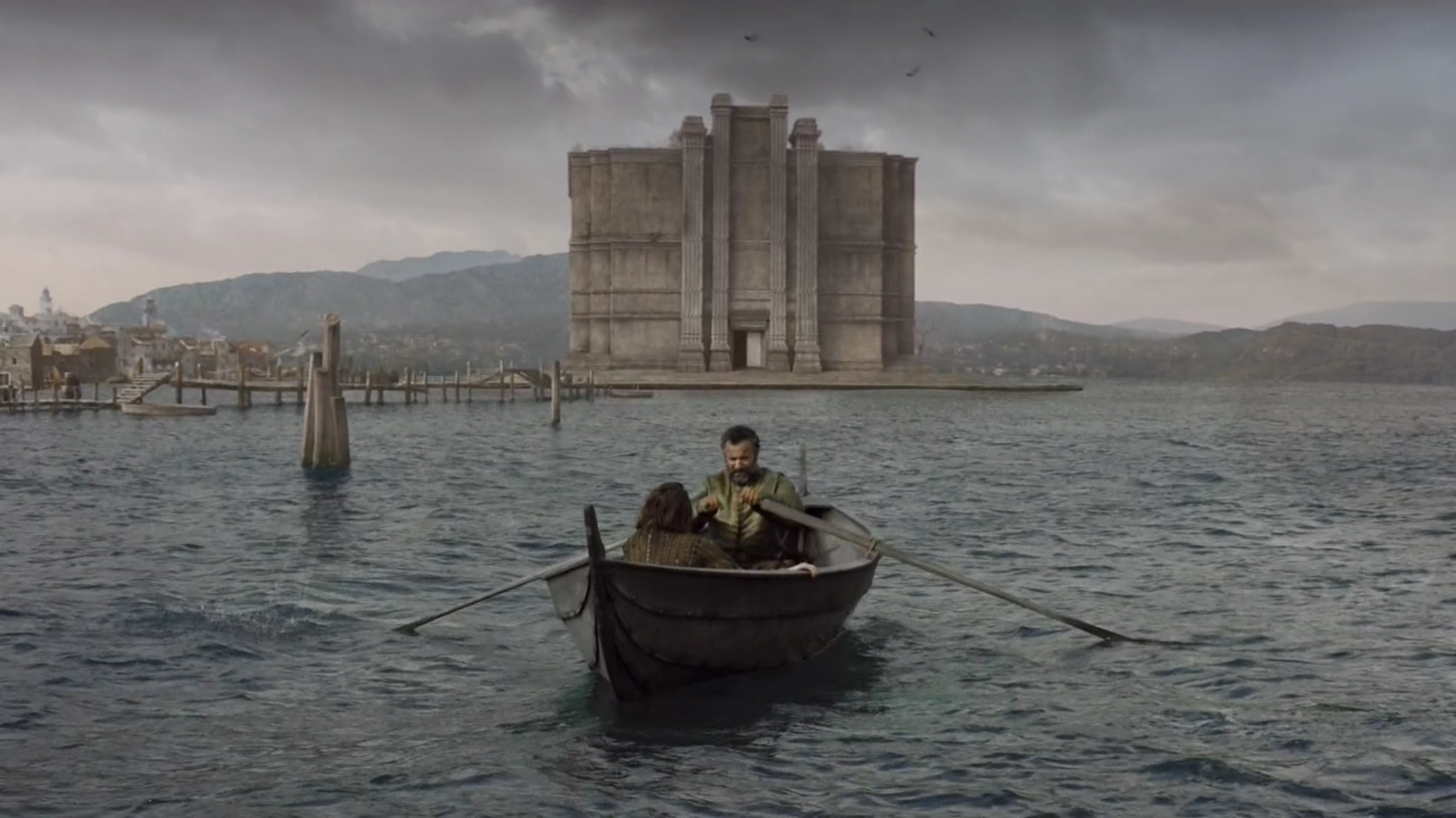
Plate shot incorporating location build, Split; image via Christina Moore
In what ways can the architectural environment help to tell a story and frame a narrative, be it in film, television, theater or even in the real world?
I think that a film’s design — and by extrapolation, its architecture — extend, echo and support the narrative and character of the story. We often think about the metaphorical significance of what we are designing. At a basic level, the way we consider light entering a space will have a fundamental influence on the way it is shot and the way we will see the characters and action.
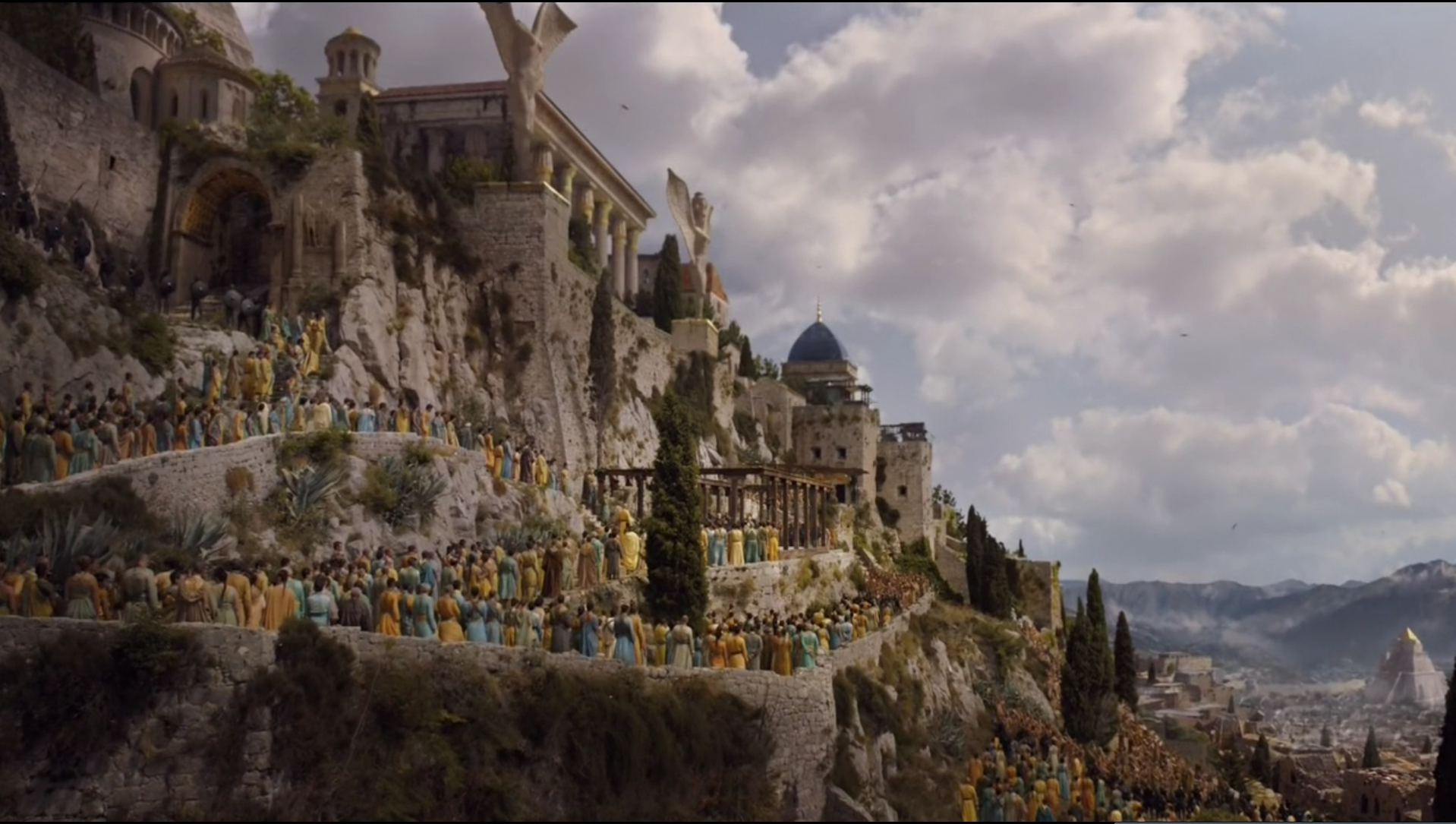
Plate shot incorporating location build, Split; image via Christina Moore
What role did architectural renderings / models play in Game of Thrones?
In my five years on GoT, I was able to witness the change and refinement of Visual Effects (VFX) set extensions and improvements in the digital world as the show moved on. It is easy to see the increasing ambition played by VFX from season to season, not just in the creation of mammoths and dragons, but in the way the built sets are extended and the places fleshed out.
Kings Landing always felt like a monumental and labyrinthine place, with far more scale and mystery than the elements that we built as physical sets and found on real locations. It was really helpful (and highly unusual) that the VFX department and art department were based in adjacent offices in Belfast, which really helped to promote good lines of communication throughout the prep and production process.

Location build, Dubrovnik; the amphitheatre; image via Christina Moore
What was your favorite set design created for GoT and what made it special?
I looked after the foreign unit for five years, building sets in amazing places from Morocco, to Croatia and Spain. It was always a different experience and different collaboration with local crews and privileged access to world heritage sites and spectacular natural parkland usually off limits to film crews. I think I am most proud of the Mountain and Viper fight, which we built in a 1980s outdoor disco in Dubrovnik.
It had all the best GoT elements: A genuinely exciting action sequence with a heart-stopping and unexpected conclusion, and an incredible location with a wonderfully dramatic setting above the sea. Highly skilled work from the plasterers, painters and greens men and also from VFX who completed the set digitally and embedded it within the architecture of Kings Landing. Oh, and I could also swim in the perfect cove every lunchtime!
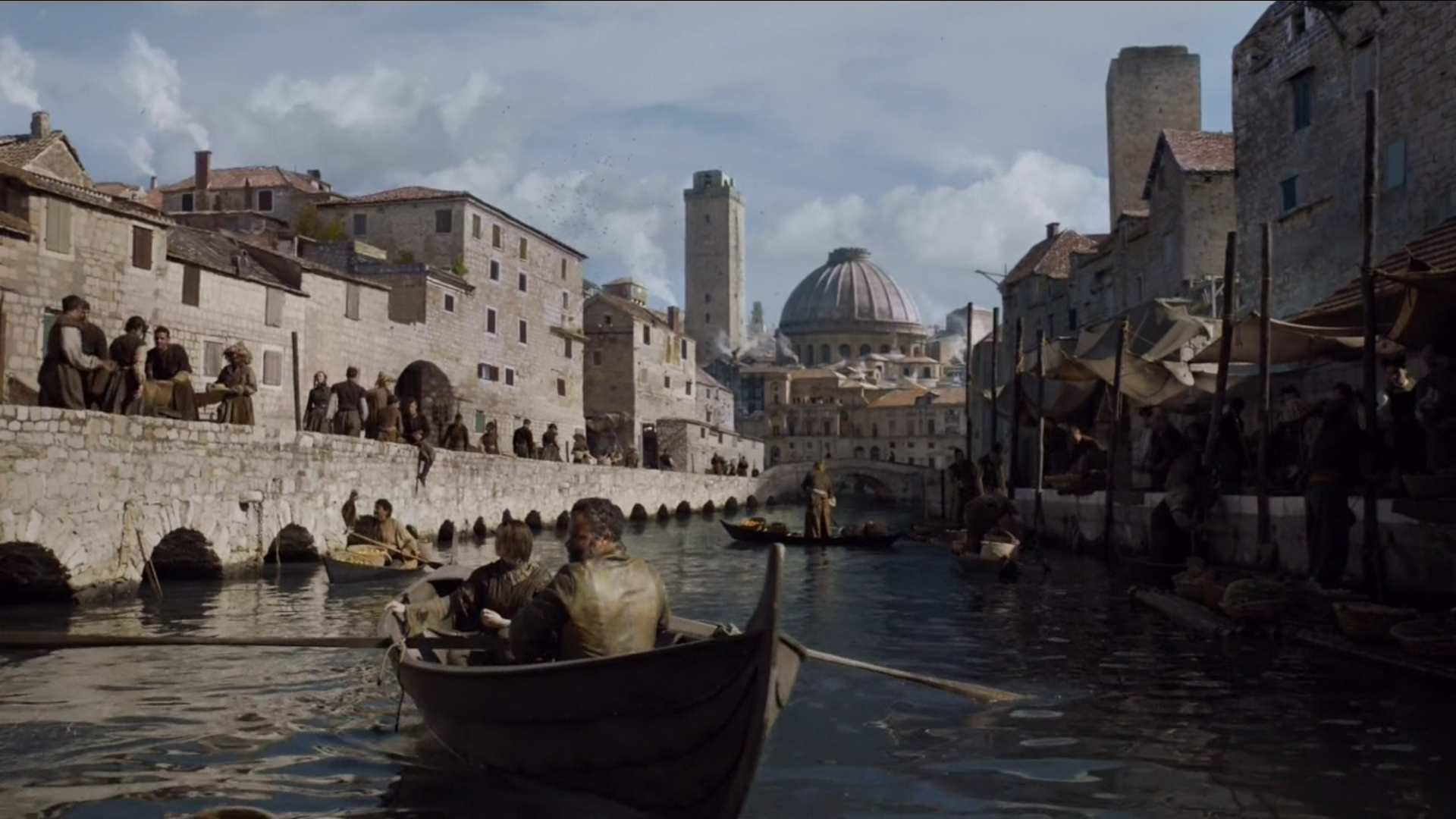
Plate shot incorporating location build, Split; image via Christina Moore
Which were the most ambitious scenes to design from an art direction standpoint?
I didn’t work on Season 8, because the foreign unit was dispensed with: A lot of the incredible buildings we had utilized on location in Spain and Croatia were built on the back lot and extended digitally. It was an immense achievement of unimaginable scale; hats off to the Belfast art department. For me personally, art directing the battle scene on the attack of the loot train in Season 7 was hugely challenging, in a way I hadn’t expected, as we were not building architectural sets as such.
There was so much landscaping and changes to make every day; SFX to incorporate, digital elements to plan for (we worked closely with VFX to produce an animatic of the whole sequence before we shot it, something we used as a template frame by frame) and generally everything to seamlessly integrate and organize. It was also the single longest scene I had worked on, shooting over 3 weeks in a beautiful but quite remote parkland in Spain, where the weather was frequently extreme — something you don’t need to worry about in the digital world!
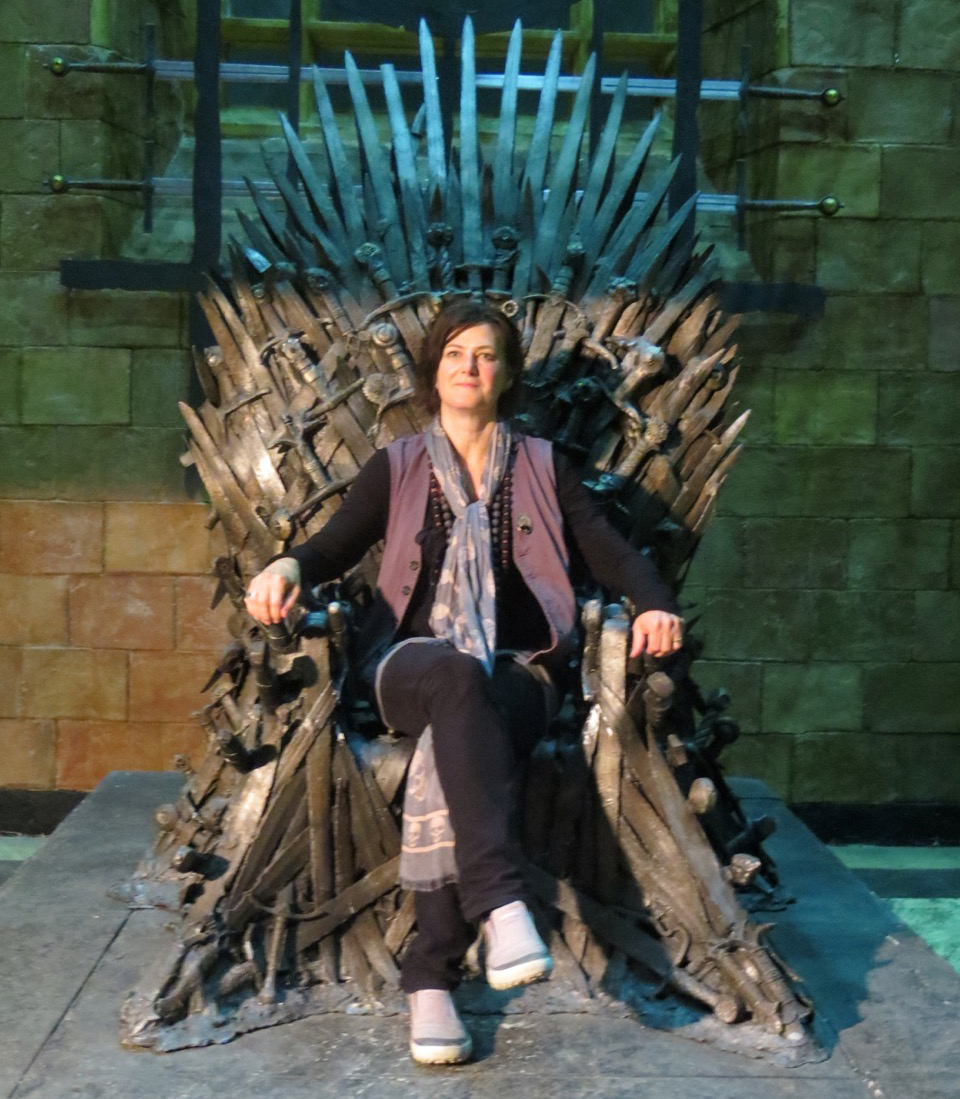
Christina Moore on Set! Image via Christina Moore
What qualities will you be looking out for when reviewing the entries for the One Rendering Challenge?
A sense of architecture and story telling. The creation of a believable space, whether it be a fantasy or based on something recognizable and real. An understanding of light. Sensitivity to detail, scale and texture. A consideration of character and anticipation of drama: What is going to happen in the place?
I’m really looking forward to seeing some amazing creations!
Architizer is delighted to reveal the winners of the 2025 Vision Awards! We'll continue celebrating the power of architectural representation — get on the program mailing list by clicking here.
